Originally published in the Miniature Gazette, November/December 2024, pages 8–12. The version below contains live links for your convenience.
Celebrating Cincinnati Culture
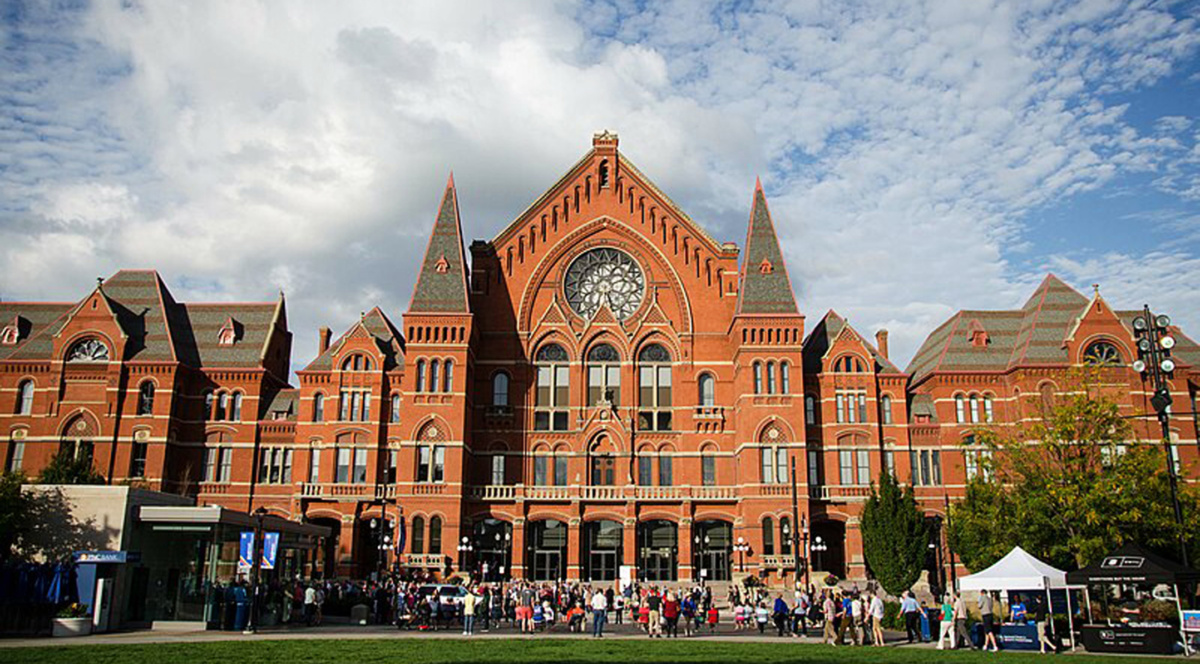
By now I hope miniaturists everywhere are aware that the 2025 NAME National Convention will be held in Cincinnati, Ohio. Being artists ourselves, and collectors of miniature art, this time I hope to excite everyone’s enthusiasm to explore our city.
What comes to mind when we say culture? Museums, historic sites, art, literature, music, ballet, opera… we have it all in abundance! This article presents a selection of the most popular museums and historic houses, along with some hidden gems, to add to your “List of Things To Do In and Around Cincinnati.” These are located reasonably close to the city, and the descriptions are in alphabetical order. Next time we’ll write about interesting places that are a little farther away.
✑ Most are downtown. I simplified addresses to street and zip code.
Meandering through Magnificent Museums & More
The American Classical Music Hall of Fame and Museum celebrates individuals and institutions that have made significant contributions to classical music. It inducted its first honorees in 1998. Exhibits can only be viewed via a virtual museum. In 2012 “The Classical Walk of Fame” pavement stones were installed in Washington Park (1230 Elm Street, across from Cincinnati Music Hall). A mobile app allows visitors to read about the inductees, listen to their music, and view related pictures. A mobile jukebox allows one to play classical music, which activates the park’s “dancing fountain.” More info and links to the app at: <classicalwalkoffame.org/about/about-classical-music-walk-of-fame>.
The American Sign Museum in historic Camp Washington is the largest public sign museum in America. Over 500 signs and other objects that span nearly 100 years of signage are displayed. You can browse the Permanent Collection online. It also has a Library & Resource Center (open by appointment only). Co-located in the museum, Neonworks of Cincinnati presents a live demonstration showing how they restore neon signs. 1330 Monmouth Avenue 45225 <americansignmuseum.org>
Aronoff Center for the Arts, opened in 1995, is known to Cincinnatians simply as the Aronoff. It is home to three versatile performance spaces and resident companies for Broadway plays, ballet, dance, and theater. In addition, its Weston Art Gallery showcases emerging and professional visual artists. The Gallery is free and only one block from Fountain Square. Guided tours are available and free; contact the gallery to set up a reservation. For current performance schedules and exhibits, see the website. 650 Walnut Street 45202 <cincinnatiarts.org/aronoff-center-home>
The Art Academy of Cincinnati started in 1869 as the McMicken School of Drawing and Design, becoming one of the first established departments of the University of Cincinnati. Over the years they changed names, moved, became a museum school, and finally, in 1998, became a fully independent college of art and design. Now located in historic Over-the-Rhine, the academy features three public galleries on campus, presenting the work of internationally acclaimed photographers and rising artists. 1212 Jackson Street 45202 <artacademy.edu>
Our famous Carew Tower is a 49-story, 574-foot-tall Art Deco skyscraper completed in 1931 in the heart of downtown. It was the tallest building in the city from 1931–2011. Art Deco motifs can be found throughout the building, particularly in the metalwork and areas surrounding the elevators and lights. Locally-made Rookwood Pottery floral tiles adorn the east and west entrances. Today, it is home to a shopping arcade, Hilton Cincinnati Netherland Plaza hotel, and offices. Eighteen Louis Grell murals can be found throughout the hotel, and the Palace of Versailles inspired its Hall of Mirrors banquet room. One used to be able to access the 49th floor observation deck, but it is currently closed (there is talk that it may re-open). As of 2022, the building was sold and is to undergo residential conversion. 441 Vine Street 45202 <en.wikipedia.org/wiki/Carew_Tower>
Opening in 1886, the Cincinnati Art Museum was the first purpose-built art museum west of the Allegheny Mountains. Its collection of over 67,000 works spanning 6,000 years of human history make it one of the most comprehensive collections in the Midwest. It has a gift shop, a café, and a library. Although special exhibits incur a fee, general admission and parking are free. The Cincinnati Art Museum is conveniently located in Eden Park. 953 Eden Park Drive 45202 <cincinnatiartmuseum.org>
With Cincinnati as the birthplace of professional firefighting, the Cincinnati Fire Museum highlights significant contributions that Cincinnati has made to the profession. Housed in the restored 1906 Court Street Firehouse downtown, the CFM displays over 200 years of firefighting artifacts and honors both past and present firefighters. Exhibits include an 1808 fire drum, the oldest surviving fire engine in Cincinnati, and an 1836 hand pumper. 315 West Court Street 45202 <cincyfiremuseum.com>
The Cincinnati Museum Center at Union Terminal is a MUST SEE while you are here. It has been awarded the National Medal for Museum and Library Service, the highest honor for an American museum. In addition to special events and featured exhibits, it houses the Museum of Natural History & Science, the Children’s Museum, the Robert D. Lindner Family OMNIMAX® Theater, the Cincinnati History Museum, the Cincinnati History Library and Archives, the Cr(eat)e Culinary Studio featuring the Kroger Food Lab, and the Nancy & David Wolf Holocaust & Humanity Center. (More about Union Terminal’s architecture below.) 1301 Western Avenue 45203 <cincymuseum.org>
Cincinnati Music Hall, with its Victorian-Gothic architecture, is one of Cincinnati’s most iconic buildings. Built in 1878, it is home to the Cincinnati Ballet, the Cincinnati Opera (the nation’s second oldest), the Cincinnati Pops Orchestra, the Cincinnati Symphony Orchestra (the nation’s sixth oldest), and the May Festival (the longest-running choral festival in the Western hemisphere). Inside and outside tours are available. 650 Walnut Street 45202 <cincinnatiarts.org/music-hall-home>
✑ Music Hall has a rich history of hauntings and ghost sightings, most likely because it was built on the site of a potter’s field. “Ghost Hunters” featured it in a special Halloween episode in 2014, and Travel Channel lists it as one of the most terrifying places in America. Tickets sell out early for the popular after-hours Ghost Tours. <cincinnatiarts.org/events/detail/ghost-tours-1>
The Cincinnati Observatory is the oldest public observatory in the country. Main telescopes are an 11-inch Merz and Mahler from 1845 and a 16-inch Alvan Clark and Sons from 1904. When the great Merz and Mahler refractor saw first light in 1845, it was the largest in the Western Hemisphere and third largest in the world. Professor Ormsby MacKnight Mitchel, the first director, wrote and edited the first astronomical publication in the U.S. The second director, Cleveland Abbe, published the nation’s first weather forecasts and later assisted in founding the National Weather Service. Recently restored, this fully function–ing 19th century observatory is used daily by public and amateur astronomers. It now provides astronomy education with day and night tours, telescope training, classes, and special events. 3489 Observatory Place 45208 <cincinnatiobservatory.org>
Cincinnati Reds Hall of Fame and Museum at Great American Ball Park preserves the story of the Cincinnati Reds, the first professional baseball team in the country. The museum features 16,000 square feet of historical, interactive and educational exhibits. It offers Museum Tours, Ballpark Tours, and Club House Tours. The Reds Hall of Fame debuted in 1958 with the induction of five stars from the 1939–1940 championship teams. Note that the website has separate menus for the Hall of Fame and the Museum. 100 Joe Nuxhall Way 45202 HALL OF FAME <mlb.com/reds/hall-of-fame> MUSEUM <mlb.com/reds/hall-of-fame/visit/exhibits>
The Cincinnati Symphony Orchestra (CSO) is the first orchestra in Ohio and the sixth oldest in the country. Calling Music Hall their home, they are the official orchestra for the Cincinnati May Festival, Cincinnati Opera, and Cincinnati Ballet. Fostering music education in many forms, their efforts include two youth orchestras, the Nouveau program, Musicians in Schools, the CSO Brass Institute, and the Young People’s Concerts series, which began more than 100 years ago. 650 Walnut Street 45202 <cincinnatisymphony.org>
If you’re into REALLY BIG engines, Cincinnati Triple Steam Museum at Historic Old River Station is a hidden wonder. At the turn of the century when Cincinnati needed a cutting-edge water pumping and treatment facility, the City contracted New Jersey-based Camden Iron Works to craft the engines: four triple-expansion crank and flywheel water pumping steam engines, each with a pump capacity of 30 million gallons a day, and a rapid sand filtration facility to make sanitized drinking water. The engines are the largest ever built, weighing 1,400 tons and towering 104 feet high. The facility ran from 1907 until 1963. On every first Saturday of the month, they shut off active pumps and host free, up-close public tours. You must register on the website. 5651 Kellogg Avenue 45228 <cincinnatitriplesteam.org>
The Cincinnati Type & Print Museum is a working museum in the Lower Price Hill neighborhood. They have a large collection of printing equipment, cases of foundry type, fonts of wood type, numerous “cuts” and printing plates, as well as a library and archival collection dating to the late 1700s. The equipment is still regularly used. Get a hands-on look at the history of printing in Cincinnati and have a chance to put ink on paper yourself. Free to visit but by appointment only, Tuesdays through Saturdays. 2307 West Eighth Street 45204 <cincinnatitypeprintmuseum.org>
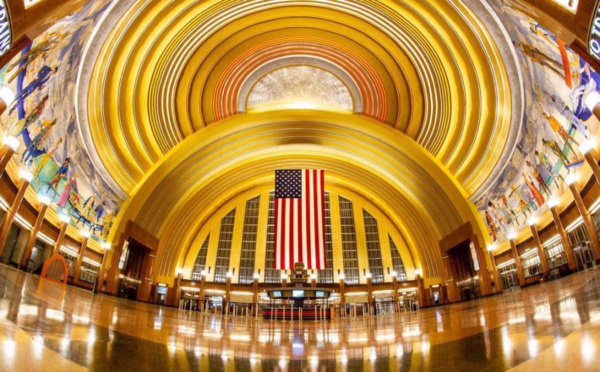
Boasting the largest half-dome in the western hemisphere, our Art Deco style Cincinnati Union Terminal is considered one of the finest train stations ever constructed. Opening in 1933, it was designed to accommodate 17,000 passengers and 216 trains a day. Amtrak moved their passenger service out of CUT in 1972, and then resumed service in 1991 after the Museum Center opened. Admire the Winold Reiss mosaics and other artwork.* Enjoy a sweet treat in the charming Rookwood-tiled ice cream parlor. Visit Tower A, the original control tower, for an expansive view of the huge rail yard (check the website for hours). (See above for details of the “Cincinnati Museum Center.”) 1301 Western Avenue 45203 <cincymuseum.org/union-terminal>
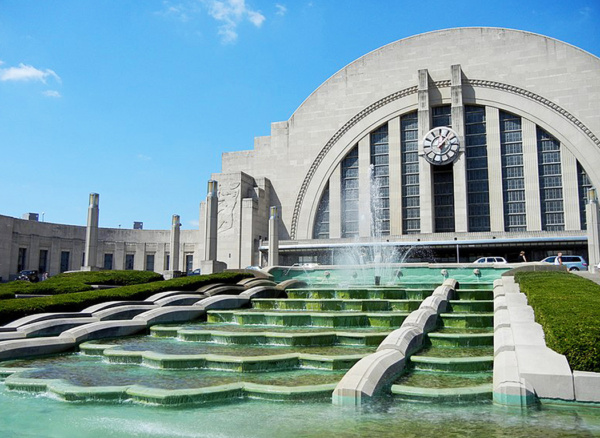
* Art commissions for the new Union Terminal, likely one of the largest of the 1930s, totaled roughly 18,150 square feet of artwork: <cincymuseum.org/art-of-union-terminal>
• Art Deco artist Winold Reiss created 23 murals depicting Cincinnati’s history and industry that were originally installed in Union Terminal. Ravenna Tile Company of New York enlarged and reproduced Reiss’ scale paintings on the walls with colored plaster and glass mosaic tile. Why glass tile? Ideal for a smokey, busy train station, glass tile is easy to maintain, and colors don’t fade over time (it’s said that the cost for the mosaics came out of the artist’s own commission). Although Reiss wanted to show “unnamed workers working for unnamed businesses,” all 35 workers captured in the mosaics have recently been identified. Reiss’ designs would eventually account for 11,908 square feet of artwork. Eight Reiss murals remain at Cincinnati Union Terminal: two 105′ by 22′ murals in the rotunda, two by the Omnimax Theater, and four others; one large one could not be saved. Fourteen were moved to the airport in 1973. Twenty years later, five of those were moved again due to an expansion of Airport Terminal 3. But in 2015, nine were relocated to the exterior of the Duke Energy Convention Center. <en.wikipedia.org/wiki/Winold_Reiss_industrial_murals>
• French artist Pierre Bourdelle was contracted to paint the art in the public rooms. His work was fantasy based, conjuring up jungle scenes, mermaids, and fanciful flowers. The colors were vivid and some of the materials were exotic, as, for public installations, he liked to use hand-cut linoleum that resulted in an embossed, leather-like appearance. Bourdelle would ultimately create 5,496 square feet of artwork for Union Terminal, the largest single project of his career.
• Well-known Rookwood Pottery artist William E. Hentschel designed the Rookwood Tea Room—today the Rookwood Ice Cream Parlor. The delightful design features dragonflies and flowers amongst floor-to-ceiling colored tile in mint green, pale gray, and mauve.
• Maxfield Keck and his team carved two bas relief murals that flank the rotunda. They represent transportation and commerce.
In 1939, three women founded the Modern Art Society with a small gallery space in the basement of the Cincinnati Art Museum. It was one of the first modern art institutions in the country. By 1954, they opened the Contemporary Arts Center, which now has a permanent home named the Rosenthal Center for Contemporary Art, with galleries, a black box performance space, and an education center known as the UnMuseum. 44 East Sixth Street 45202 <contemporaryartscenter.org>
Do you enjoy meeting and buying art directly from artists who create it? Essex Studios lets you do just that. The 1913 Essex building was renovated into artist studios in 2001. It is now home to nearly 100 artists specializing in painting, photography, sculpture, jewelry, design, performance art, fashion, and installations. They host quarterly Art Walks, where visitors can meet the artists and enjoy live music and refreshments. 2511 Essex Place 45206 <essexstudioscincinnati.com>
As the area’s principal repository for artifacts, records, and research resources related to law enforcement, the Greater Cincinnati Police Museum opened in 2006. Without accepting municipal or state funds, the volunteer staff works to conserve the historic environment of law enforcement, broaden public access, and increase understanding of policing. They also document local, state, and federal officers who have given their lives in service. Open Tuesdays, Thursdays, and Saturdays. 308 Reading Road 45202 <police-museum.org>
Near the Cincinnati Art Museum, you will find a veritable Garden of Eden—the Art Deco style Krohn Conservatory, which opened in 1933. Its glass walls house an amazing variety of over 3500 plant species. Rooms dedicated to specific environments include a Fern House, a Palm House, a Desert House, an Orchid House, a Bonsai Gallery, and a Citrus Room within the Seasonal Floral Showroom, which hosts an annual Butterfly Show and Holiday Show, among other events. Enjoy a koi pond, a waterfall, and a gift shop. Year-round, Krohn is always a treat—one of my favorites! 1501 Eden Park Drive 45202 <cincinnati-oh.gov/cincyparks/visit-a-park/find-a-parkfacility/krohn-conservatory>
The Lloyd Library and Museum was founded in the 1870s by three brothers who were pharmacists involved in researching pharmaceutical chemistry, collecting botanical specimens, and manufacturing drugs for Eclectic Physicians. It is a world-renowned independent research library and exhibit space containing monographs and serials, archival manuscripts, and museum artifacts that cover a variety of disciplines, including botany, pharmacy, natural history, alternative medicine, and the history of medicine and science. It is open to the public and free of charge. 917 Plum Street 45202 <lloydlibrary.org>
Built in 1908 by the Grand Army of the Republic, Memorial Hall stands as a monument to Cincinnati veterans of the Spanish-American War and the U.S. Civil War. The renovated three-story building features two ballrooms, breakout rooms, and a 556-seat theater that is noted for its exceptional acoustics, decorative murals, and Tiffany chandeliers and where a variety of performances take place. The Hall also houses a collection of artwork and artifacts of civic and military history, including the wreath that is said to have adorned Abraham Lincoln’s casket when it passed through Columbus, Ohio. The website has a virtual tour. 1225 Elm Street 45202 <memorialhallotr.com>
Since 1835—before the creation of public libraries—the Mercantile Library has been a gathering place for readers and writers. Founded by 45 young male merchants who lacked formal education but were hungry for knowledge, the member–ship library began from their collections. They collected books and art; hosted lectures; and discussed books, business, and politics. Called the most beautiful library in Cincinnati, it now houses over 85,000 books and hosts hundreds of events every year. Open Monday through Friday, it is free to visit. 38 Fountain Square Plaza 45202 <mercantilelibrary.com>
The National Underground Railroad Freedom Center opened in 2004. According to its website, it is “a museum of conscience, an education center, a convener of dialogue, and a beacon of light for inclusive freedom around the globe.” Presenting exhibits that are rooted in stories of the Underground Railroad, it promotes social justice for all. I’ve heard that Flame Fridays are the best days to visit, to snap a selfie with the Eternal Flame and view the city skyline. Free admission on the fifth and third Sundays of each month, plus on MLK Day and on Juneteenth. 50 East Freedom Way 45202 <freedomcenter.org>
The eight-story Pendleton Art Center claims to house the world’s largest collection of artists under one roof, with current occupancy at over 200 artists. Through once a month open studio walks called “Final Fridays,” guests can buy works directly from the artists. The PAC complex features the main warehouse and three adjacent buildings: the Annex, Studios@510, and 1321 Studios. Open from 5–9 PM ONLY on the last Fridays of each month. Individual artists may also be available by appointment. 1310 Pendleton Street 45202 <pendletonartcenter.com>
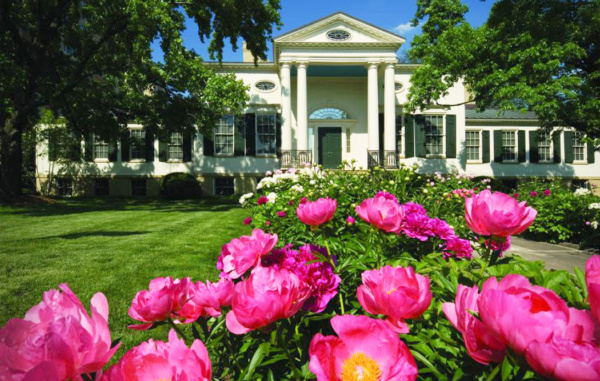
The Taft Museum of Art is an intimate museum located in an 1820s historic mansion that is Downtown Cincinnati’s oldest wooden residence still in its original location. It was former home to several prominent Cincinnatians, including Martin Baum, Nicholas Longworth, David Sinton, Anna Sinton Taft, and Charles Phelps Taft. (In 1908 William Howard Taft, who was Charles Taft’s half-brother, stood in front of the portico to accept the Republican nomination for U.S. President.) Charles and Anna Taft bequeathed their home and art collection to the people of Cincinnati in 1927; five years later it opened as a museum. The Taft holds National Historic Landmark status for both the historic house and its eight Robert S. Duncanson landscape murals, now recognized as the most significant pre-Civil War domestic murals in the U.S. Its outstanding collection features European and American master paintings, sculptures, French Renaissance enamels, and more. My favorite painting by Rembrandt van Rijn lives there: “Portrait of a Man Rising from His Chair,” c1633. I do hope you’ll plan to visit when you’re here. Sundays and Mondays are free. 316 Pike Street 45202 <taftmuseum.org>
Situated in the heart of The Queen City, adjacent to the Contemporary Arts Center and across the street from the Aronoff, 21c Museum Hotel is a multi-venue contemporary art museum, plus an award-winning 156-room boutique hotel and restaurant. Discover contemporary art in the most unexpected places, including specially commissioned site-specific works and rotating exhibits in the lobby and gallery level. 609 Walnut Street 45202 <21cmuseumhotels.com/cincinnati>
Highlighting Historic Houses
Originally owned by Phebe and William Betts, a brick maker, the Betts House, built in 1804, is the oldest residential structure in Downtown Cincinnati and the oldest brick house in Ohio still on its original site. This survivor of Cincinnati’s settlement years offers exhibits on architecture; historic preservation; and building trades, materials, and construction. It’s the head–quarters of The National Society of the Colonial Dames of America in the State of Ohio, who opened it as a historic house museum in 1996. Open Wednesday, Friday, and Saturday. 416 Clark Street 45203 <bettshousecincinnati.org>
The Harriet Beecher Stowe House was once the residence of the famous author of the 1852 novel Uncle Tom’s Cabin. Completed in 1833, it was constructed specifically to house the Lane Seminary President (Harriet’s father, the Rev. Lyman Beecher) and his family. Owned by the Ohio Historical Society, exhibits focus on Harriet, her family, the Lane Seminary, abolitionists, and the Underground Railroad. Also highlighted is the house’s history as the Edgemont Inn—a 1940s boarding house, community gathering space, and tavern managed by African-American proprietor Irene Bacon. Open Thursday through Sunday. 2950 Gilbert Avenue 45206 <stowehousecincy.org>
The Heritage Village Museum is a living history museum depicting 19th century life in Southwestern Ohio. Located within Sharon Woods Park, the village contains 13 historic buildings including homes, a church, a general store, a doctor’s office, a print shop, and a train station, plus a flatboat. Although a couple of the buildings are replicas, most were moved here to save them from destruction. Heritage Village is open daily for self-guided tours. It also offers educational programs and special events through the year. 11500 Lebanon Road, Sharonville, OH 45241 <heritagevillagecincinnati.org>
Laurel Court was built in 1902–1907 as the home of Peter G. Thomson, founder of Champion Coated Paper Company. It is one of the finest surviving residences built during the Gilded Age. Now privately owned, tours can be arranged by request. 5870 Belmont Avenue 45224 <laurelcourt.com>
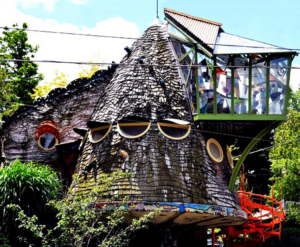
Cincinnati’s Mushroom House is an artful work by architect Terry Brown, who liked incorporating a variety of materials in irregular organic shapes. Taking 14 years to create (1992–2006), the one-bedroom house features a cone shaped addition topped with an angular glass room, an orange spiral staircase entry, and stained glass windows and portholes set into a swirling cedar shingle exterior. It served as a secondary residence, studio, and teaching tool until Brown’s passing in 2008. Although not open for tours, multiple online resources have recorded its features; see one such video at <youtube.com/watch?v=pVUFwH9Q6fk>. It might pique your curiosity to stop by for a photo op. Wouldn’t it inspire a wonderful fantasy house in miniature? 3331 Erie Avenue 45208
<en.wikipedia.org/wiki/Mushroom_House_(Cincinnati)>
Built in 1928, Tudor-style Pinecroft Manor was the home of Powel Crosley, Jr., famous local inventor (Crosley radios, refrigerators, and cars), industrialist, entrepreneur, pioneer in radio broadcasting, and former owner of the Cincinnati Reds baseball team. The mansion retains original features, which can be seen via a virtual tour on the website. Call to arrange a private tour. 2366 Kipling Avenue 45239 <pinecroftmansion.com>
The William Howard Taft National Historic Site was the birthplace and childhood home of William Howard Taft, the 27th President and the 10th Chief Justice of the U.S. The two-story Greek Revival house was built around 1845. William lived there from his birth in 1857 until he went to Yale University in 1874. Five rooms have been restored, plus exhibits present his life and accomplishments. Arrange for a tour and check out the bookstore in the separate Taft Education Center. It is free; for details, check the website Operations Hours & Seasons. An elevator is available. 2038 Auburn Avenue 45219 <nps.gov/wiho>
Connecting to our Convention Chairs
Nancye and Ellen invite all NAME members and clubs to make miniature favors for the 2025 National Convention. These are NOT tote bag favors, but rather, a nice mini item that you would like to receive yourself. They can coordinate with our Small World theme, or not, and be in any scale… for you to decide. The quantity would be any multiple of 50 up to 350. They will be used as favors in the Hospitality Suite. Please, no simple paper goods or copies—you know what we mean! If you have questions, reach out to Nancye Claypool. Thanks in advance!
(Several photos are used directly from en.wikipedia.org/wiki/Cincinnati under the Creative Commons Attribution-Share Alike 4.0 International license.)
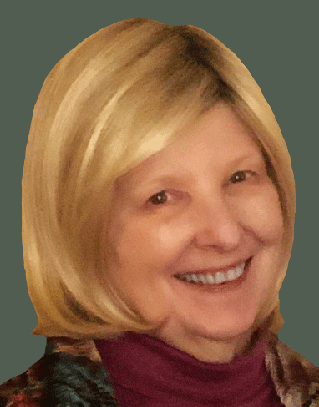
Contact: Ingrid Farnam-Koblish,
The Miniature Society of Cincinnati,
cincyminis@gmail.com. ◆